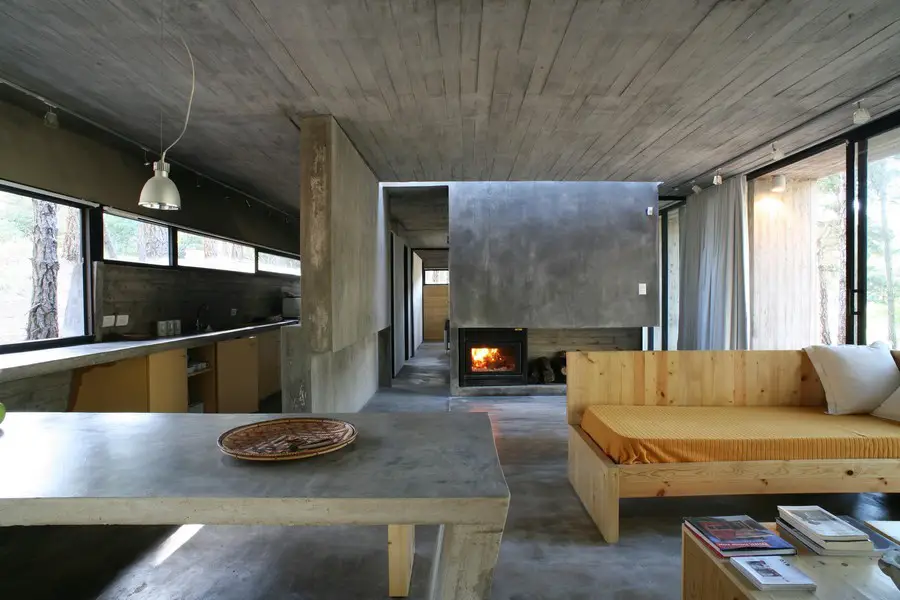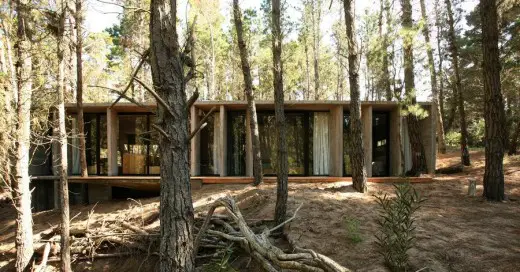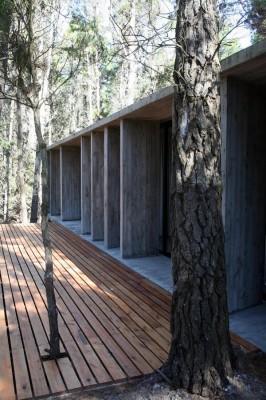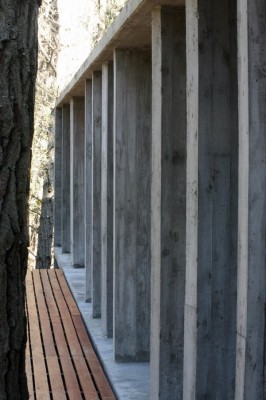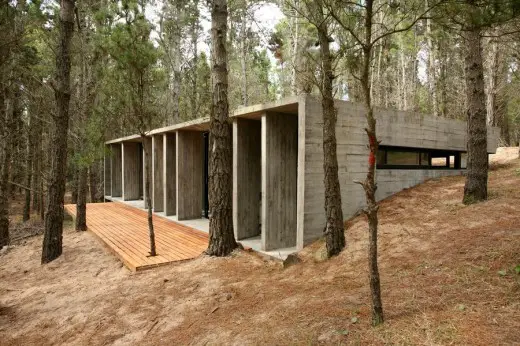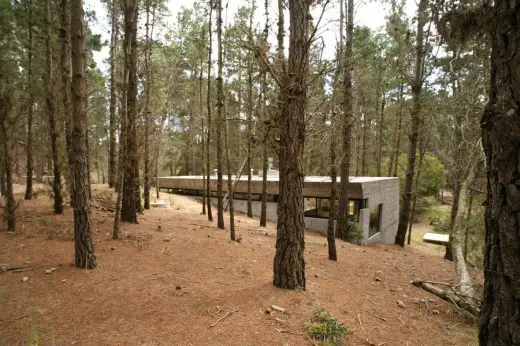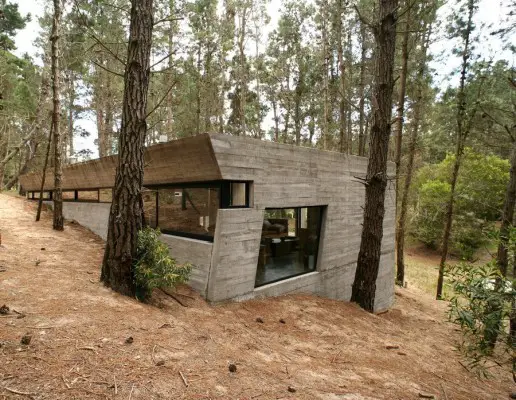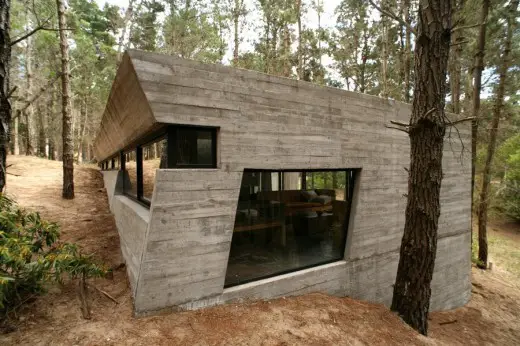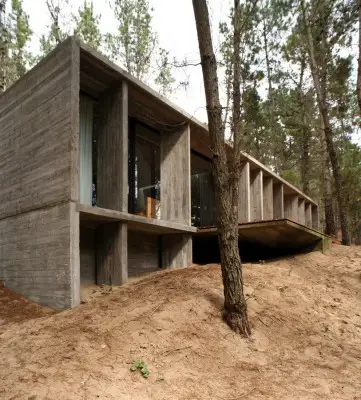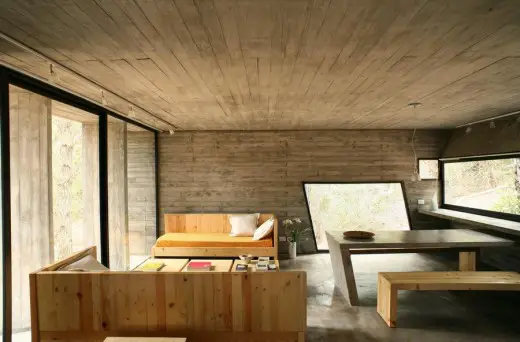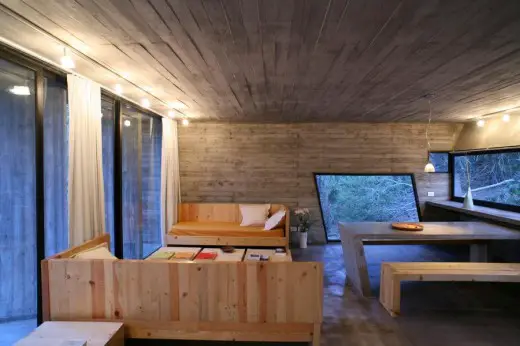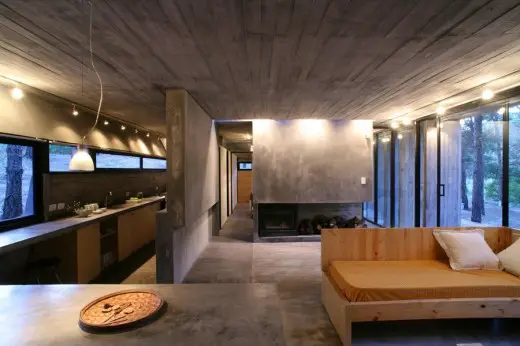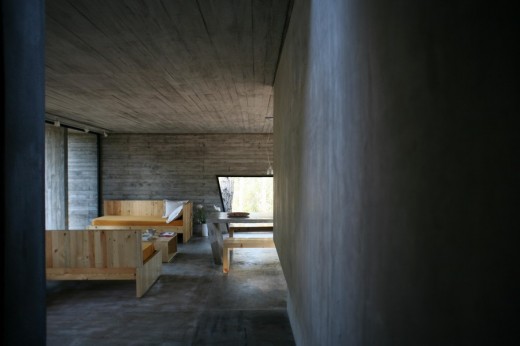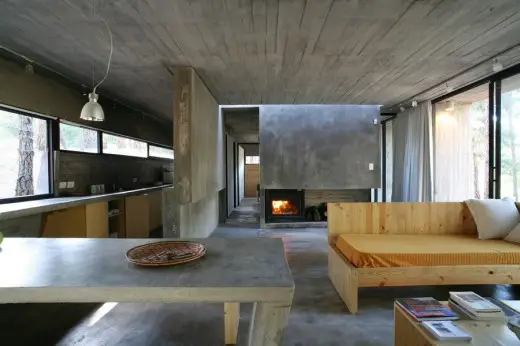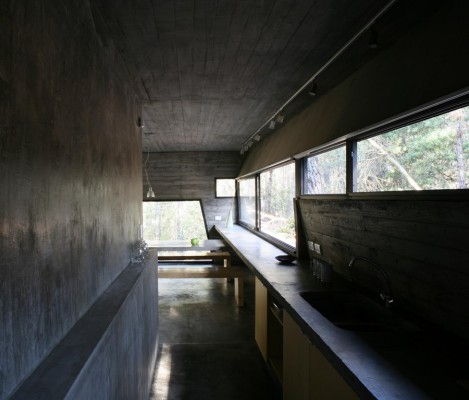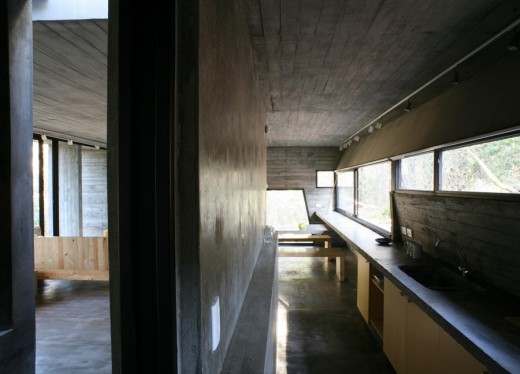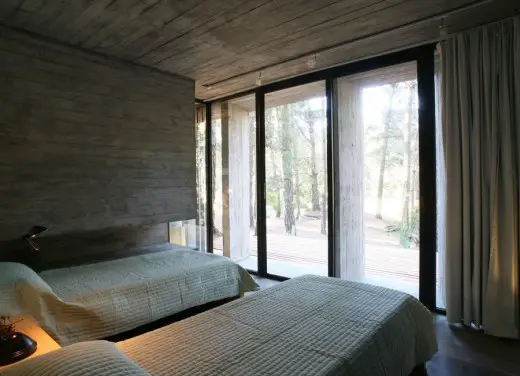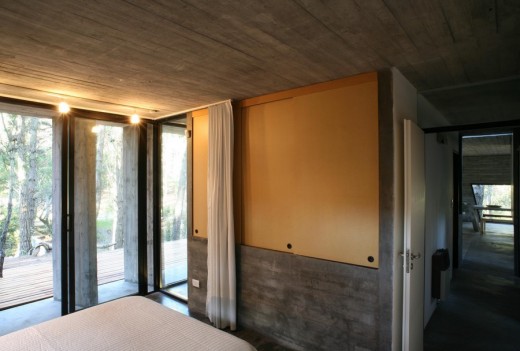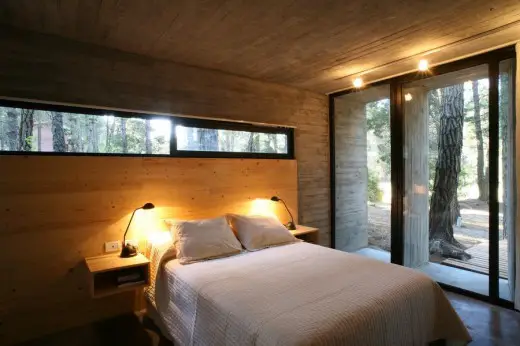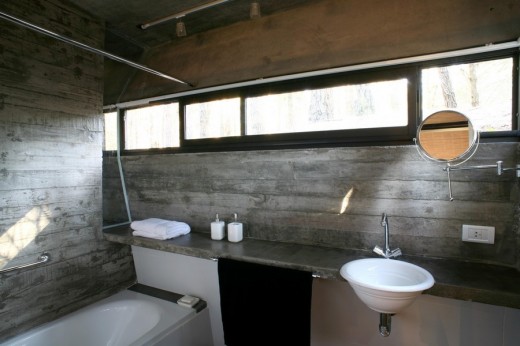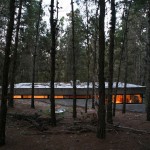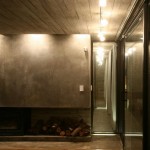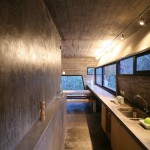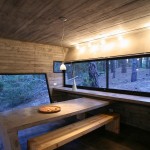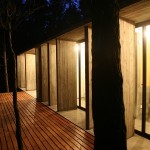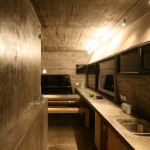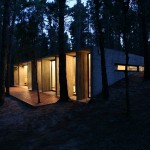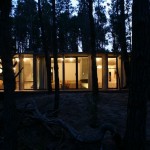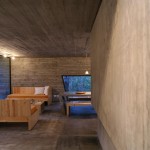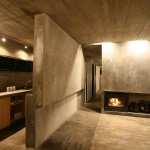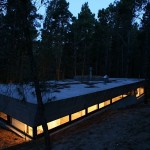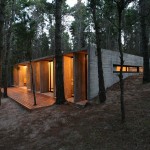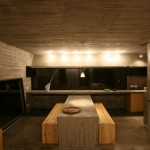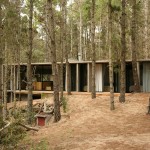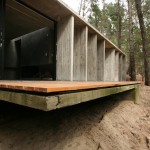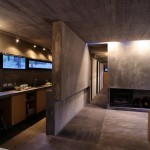Concrete House, Buenos Aires Residence, Mar Azul Home, Argentina Architecture
Concrete House, Argentina
Argentinian Residential Development – design by BAK arquitectos
24 Jun 2014
Buenos Aires Forest Residence
Design: BAK arquitectos
Location: Mar Azul, Buenos Aires Province, Argentina.
Building in the Forest
We propose choices which guarantee the survival of the natural environment.
Mar Azul is a place well-known for us from time ago, so when the architects built their first work in 2004, they knew that they would have to intervene in a land that, despite of its worthy landscape, had never counted with a legal support that protect this patrimony of those which built with a unique aim: get the most out of the earth.
This land neither counted with a code that, understanding the logic of this privileged space, regulate resolving the difference between this inappropriate constructions and the possibility of building without losing the properties of the site. In addition to this situation, the habit of building “picturesque houses in a place of fantasy” is taming slowly the forest, which is nowadays owner of a strong wild presence.
Operating in this site signifies then to assume its misalignment as a challenge and see how far we, the architects, can make an alternative contribution.
The answer was an architecture proposal of minimums resources in the materials and in form, not only as an aesthetic solution but as an ethical principle of recovery the rational use of the different resources available. This architecture must be incorporated to the landscape, seeking to be part of the environment that already exists. To make it possible, it is necessary to know “how to listen” what the sites tell us so the first’s approaches must be free of old prejudices to capture not only the tangible data, but the atmospheres that the place gives us, those which we can only perceive if our views are free of preconceptions. This meant we have to practice the exercise of “seeing for the first time”. To consider the information, letting the place invade us and to imagine how the project itself capitalizes them, all this is fundamental so that architecture and landscape can fuse.
We have already practice this exercise, going to Mar Azul in many opportunities, so we valued the strong presence of the landscape and we had experienced the microclimate the forest provides: the attenuation of the strong sea winds, the constant shadow of the trees protecting from the hot weather in the summer but, at the same time, producing a humid environment in the winter, and the fact that under the pines is smaller the amount of light during the whole year. We also knew that the forest does not require maintenance apart from removing the dry vegetation, unless other species were introduced and break the actual harmony.
Take advantage from what the environment offers:
To recognize this particular microclimate was determinant to make choices in the aesthetic and constructive system of the house. It was necessary to gain light allows us to consider the entirely work as a “semi covered”, resolving it by using big glasses which provides, from the inside, great views to the sea and to the landscape; and, from the outside, reflects the nature allowing the work to blend gracefully with it. The necessity to build the work as fast as possible and to have no maintenance makes us choice the reinforced concrete as the constructive solution. The shadow allows us to use this material, because it provides thermal protection from the spring to the autumn and its conditioning in winter was not relevant (though of course it was planned) given its status of summer house. The waterproof insulation was resolved by a high compactness concrete (H21) and is finished with a minimum slope in order to produce a faster runoff of rainwater.
Judicious use of available resources:
The expressiveness qualities of the exposed concrete and its properties of resistance and impermeability, make it unnecessary to use a surface finish, gaining a low budget in its execution without a future maintenance. On the other hand, the color and texture of the concrete, made by formwork of wood tables, provides a strong and mimetic presence at the same time, allowing the work to be in harmony with the landscape. In brief, an outer skin made by two materials: glass and concrete, resolve the integration with the landscape and gives us an answer to the Functional, Formal and Structural issues of the surface finish and maintenance.
With the same canon, the resolution of the outdoors activities was the result of making the minimum intervention in the environment. We avoid any kind of landscaping to avoid leaving unnecessary limits expressed in a landscape by now little built, or sectors contrasting with the landscape features of this privileged environment. We like this marked homogeneity of coniferous forest only interrupted now and then for some acacia and, on the other hand, the high grasslands which are the dominant vegetation in the dunes near the sea.
An aesthetic-constructive proposal as prototype
The proposal that our study has been doing in the forest of Mar Azul, so concerned in joining in this environment that originates it, and so far from the stereotypes of the site, has found wide acceptance. There are several commissions for houses with the special request to repeat the same aesthetic constructive solution and that appreciate our proposal of a more relaxed housing. This is certainly very gratifying for us but, in turn, raises the question of how to resolve the issue of repetition of that materiality proposal expressly required. The conclusion is that, if the solution resolves with solvency both integration with its surroundings and the aesthetical, uses and maintenance’s requirements of the clients, it seems logical and ethically correct to keep repeating this materiality proposal as a prototype focusing, with each new assignment, in suit specific applications required by the client and the singularities of the concerned area’s cutout. Thus, the purpose of each new project would be to install increasingly with more strength – assisted by the importance-the idea that what is built in the forest cannot break the landscape unit of that environment, with emphasis on finding ways to transform every house in a “nest or burrow”.
DESCRIPTION
The place:
Mar Azul is a seaside town at 400km south of Buenos Aires, characterized for his large dune beach and his leafy coniferous forest. The owners had chosen a place in the forest with a challenging topography, away from the sea and from the most inhabited areas, to build a cottage without loosing the important presence of the landscape.
The proposal:
The experience of a house built in the same landscape (Mar Azul House) with satisfactory results allowed us to perform and develop functional and aesthetic construction issues in the next project, emphasizing the performance of the selected system and solving the location in the complex topography.
At the moment of choosing the construction alternatives we focus on a low budget, a reduced impact in the landscape, minimum or none posterior maintenance and a short time of construction.
According to these parameters, the house was solved like a concrete prism of extended proportions and minimum height. It is located on a flat surface in a field that has a strong diagonal slope (a difference of 6m between opposite corners).
On this way it is scarcely modified the section of dune and the views are not interrupted from the bordering fields to the broad landscape, so that years later only a floor would be observed (in fact, the ceiling of the house), covered by dry foliage of the pines.
The construction is located parallel to the short side of the field and the slope of the dune is oblique respect to the orthogonal one, the house appears half-buried in one of its angles and with its foundations exposed in the opposite one.
Consequently, the pure form that contains the summer activities seems to emerge from the dune with two differentiates façades. The SW façade is sunk in the sand with an opening that appears from the beginning to the end and which height is accompanying the slope of the dune. On the other hand, the NW façade is a curtain wall like a balcony that allows distant views but, at the same time, it is partially protected of the glances from the street by partition walls, that vary theirs position and amount according to the rooms they protect.
The glasses reflect the landscape as the house is observed from outside, and they create and emphasize a series of vertical elements of much protagonism (true and reflected trees, true and reflected thin walls), that reduce the importance of the strong horizontal presence of the prism and offer to the observer changing sights while moving.
The functional organization
It is a prototype plan. On the balcony façade one room follows the other, joined by the deck. On the sunken façade, we find the bathrooms and the kitchen, and in the end that goes “unburying itself”, the dining room.
The house does not have a main entrance. It is a flexible construction in which we can get in by any of the rooms.
The “concrete furniture” defines the dormitories. These ones are 0.70m separated from the curtain wall façade through two permanent windows that can be removed or replaced by doors.
With this resource, anywhere in the house can be recompose the entire façade and each room is enlarged because it’s visually prolonged into the next.
The place to park the car, the barbecue and the platform to sunbathe and refresh yourself and all the outdoor activities are determined by the place’s own topography and were not organized by functional reasons.
It has also decided not to landscape the lot to maintain the quality of the natural landscape, which also has the advantage of requiring no maintenance other than the removal of pine trees when they dry.
Construction details
It was decided for this new experience to eliminate the structural iron cross section to take to the limit the concept of null later maintenance. The plan of the house (6.90m x 14m) is a reinforced concrete slab that rest in the partition walls of the main façade. In the opposite side was solved with a jutting out that makes possible an opening in all the extension without intermediate supports.
The jutting out is supported by three partitions walls that move of the line of the façade.
The inner partition walls are of rendered hollow bricks and painted with white latex. The floor is made of concrete screed cloths divided by plates of aluminum. The joins between walls and floor were solved with an aluminum cross section to the skirting board. The openings are of dark bronze anodizing aluminum. The heating system, since there is no gas service in the zone, was solved with a wood burning stove that acclimatizes the meeting place, the first dormitory and the corridor. The main dormitory and the baths are heated with electrical plates.
Light treatment:
Our objective was to let natural light enter to all rooms, incorporating a light entrance above the concrete furniture that contains the wood burning stove. According to that objective, a slice was projected on the ceiling creating multiple luminance effects in the walls and also in the floor that vary along the day. The same happens to the shadows of the thin walls from the façade.
The protection of light and visual from outside was solved by blackout curtains.
Furniture:
It was specially designed for this house, made by recovered Canadian pines wood from motor boxes packing.
The table is a concrete slab joined to exterior wall.
Concrete House – Building Information
Location: Mar Azul, Buenos Aires Province, Argentina.
Architecture office: BAK arquitectos
Design and Project Management: Archs. María Victoria Besonías, Guillermo de Almeida and Luciano Kruk
Collaborator: Sebastián Indri
Land area: 595, 5 m²
Built area: 90 m²
Construction year: 2006/2007
Photography: Gustavo Sosa Pinilla
Concrete House images / information from Besonías Almeida arquitectos
Location:Mar Azul, Buenos Aires Province, Argentina
Architecture in Argentina
South American Architectural Projects
Argentina Houses
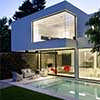
photo : Alejandro Peral
New Houses – contemporary properties across the globe
Argentine Houses
Casa Negra – Black House, near Buenos Aires
Design: Andrés Remy Arquitectos
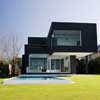
photograph : Alejandro Peral
Casa Negra
Las Lomas House, Buenos Aires
Design: Estudio Ramos Arquitectos
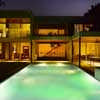
photo : Eduardo Torres
Buenos Aires Home
FYF Residence, Rosario
Architects: PATTERNS
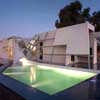
image from architects
FYF Residence
Comments / photos for the Concrete House – Buenos Aires Residence page welcome
Concrete House Argentina

